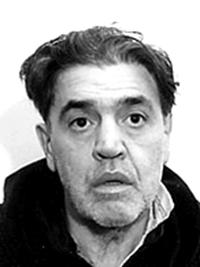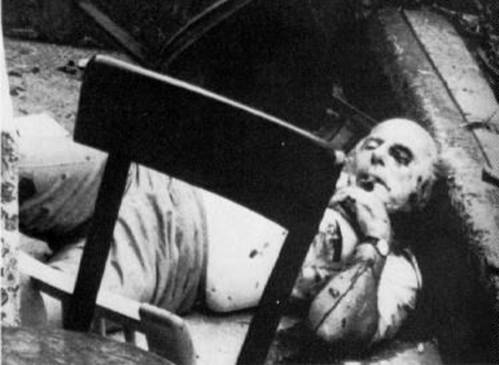|
The Wit and Wisdom of the Mafia By Selwyn Raab |
|
|
Vincent “The Chin” Gagante, a New
York Mafioso notorious for wandering the streets of New York in his bathrobe,
simulating madness. |
Carmine Galante, a Bonanno family
potentate gunned down while lunching at a restaurant in Bushwick, Brooklyn. |
|
The Wit and Wisdom of the Mafia By Selwyn
Raab
Another approach
occurred on Sullivan Street in Greenwich Village. I attempted to chat with
Vincent "Chin" Gigante whose relatives insisted that he was a
mentally distressed, punch drunk ex boxer, not the underworld titan of the
Genovese crime family. Two beefy companions of Mr. Gigante almost trampled me
as I scurried to safety. I did squeeze a
memorable rejoinder from James Failla in the 1990s while researching a story
about his role as the Gambino family's not-so-secret controller of the
city's private garbage carting industry. Known as Jimmy Brown for favoring
that sartorial shade, I intercepted him on his way to a weekly meeting with
supplicant carting contractors. Failla uncoiled a terse
rejection:" Eat (an expletive rhyming with hit.)" Covering Cosa Nostra
means you're on your own. All that is required is perseverance and a
disregard for insults. I stumbled into the beat through a side door. In the
1960s, I was handling sedate education stories on the old World Telegram and
The Sun when a school construction scandal erupted. There was stark evidence
of crumbling roofs, shoddy work and renovations that endangered the safety of
thousands of students and teachers. Combing the backgrounds of the
building-trades companies unearthed a pattern of phantom investors, rigged
bids and bribes to school officials. Much of the malfeasance was engineered
by behind-the-scenes Mafiosi. Later as a reporter for
the Telly, WNBC, PBS, and The Times, I kept running across Cosa Nostra
fingerprints on numerous aspects of government, law enforcement, the judicial
system, unions and everyday life. It required little sagacity to determine
that, by the 1970s, the Mafia operated a surrogate state in the New York
metropolitan area. Unfortunately, for much of the 20th Century New York's
governmental authorities were largely indifferent to these criminal inroads.
The majority of media editors were of a similar mind. They preferred reporting
on the occasional sensational homicides, internecine wise guy wars and
colorful gangster celebrities in place of costly, long-range inquiries to
document the Mafia's economic clout and manipulation of government agencies. At The Times, which I
joined in 1974 to cover criminal justice and governmental misdeeds, the Mafia
was generally regarded as an unrewarding assignment. It was viewed by most
reporters as a career dead-end with scant prospects for landing plum
promotions. I inherited the beat with the proviso that I would pursue
non-Mafia investigative stories and that mob reporting would focus on their
stranglehold over vital economic interests. It was a wide arena, including
the construction industry, union racketeering, garbage carting, the Garment Center
and the Fulton Fish Market.
The easy part of the
Mafia saga is waiting for arrests and relying on the customary spin from
prosecutors and investigators. The reconstruction of a major undercover case
can be intriguing but it is one dimensional. Lawyers for accused Mafiosi are
equally predictable, normally spouting uninspired, boilerplate denials. Uncovering background
material to flesh out the culture, motivation, tactics and underlying
sociopathic elements of the American Mafia was the ultimate challenge. After
all, the Cosa Nostra prides itself as being a secret society and most efforts
to mingle with their stalwarts were rebuffed. Fortunately, persistence can
pay off. One dividend came from
Anthony Accetturo, the admitted head of the Lucchese family in New Jersey in
the 1980s and 1990s. In his teens, Accetturo used a crutch to batter
opponents and was dubbed "Tumac," after a ferocious caveman in a
film, "One Million BC." Upon learning that his new bosses wanted to
whack him, Tumac defected, suddenly eager to recount his experiences and explain
why he had switched sides. A friendly New Jersey official arranged
prison interviews with Accetturo and "Tumac" provided rare insight
and scoops about the history and the strength and weaknesses of the American
Mafia.
|
|

